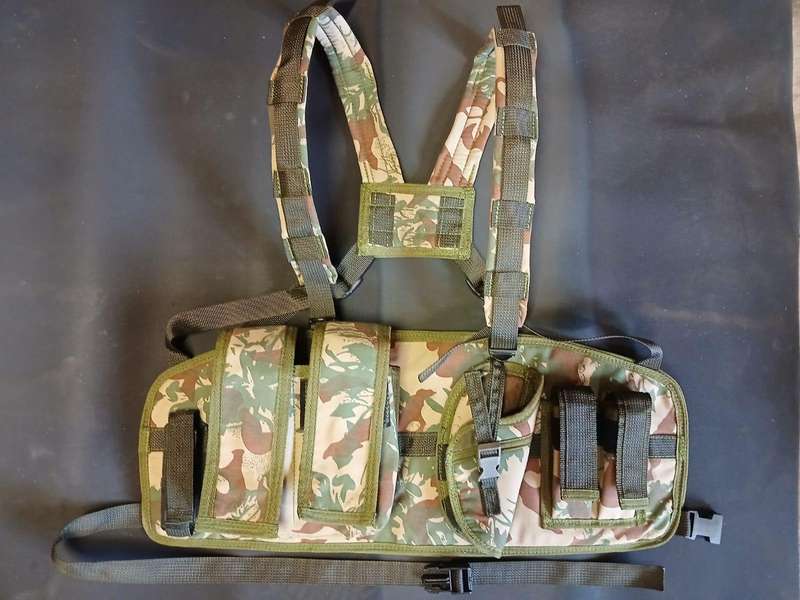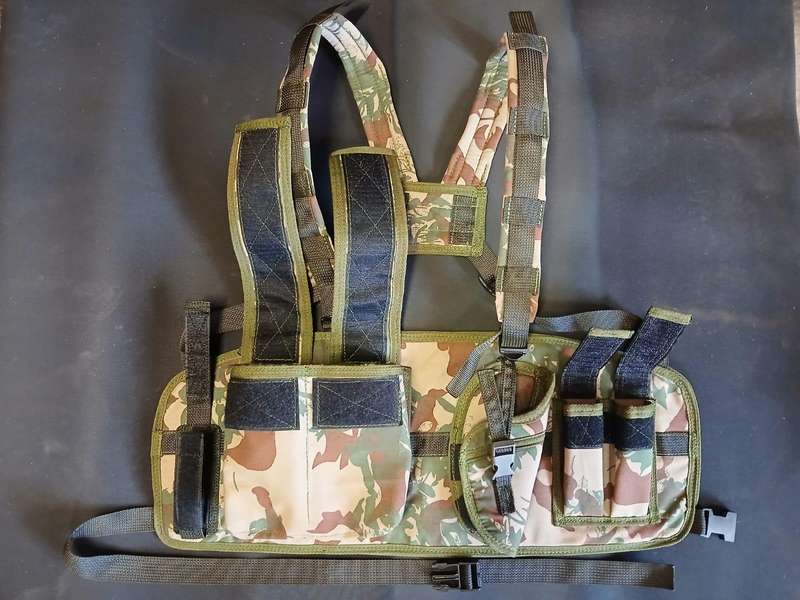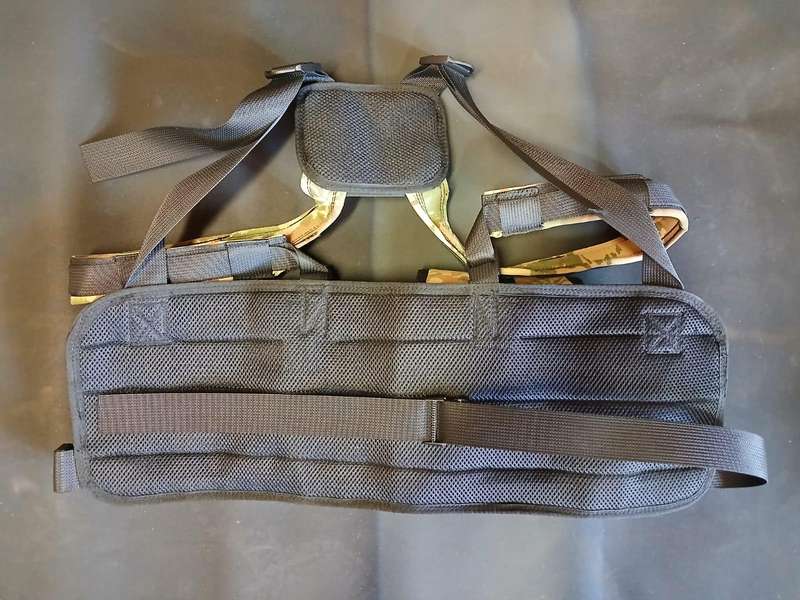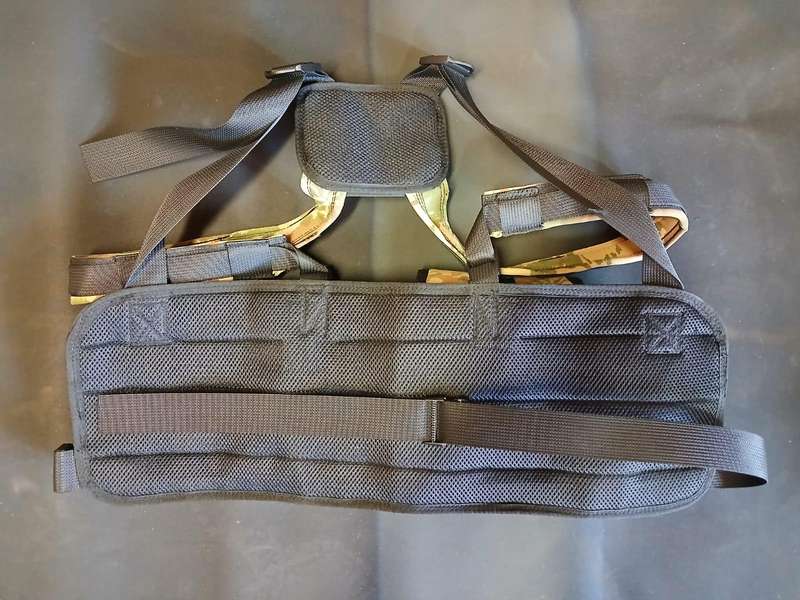For the connoisseur collector - SAP 1st Pattern and 2nd Pattern Camo Chest Webbing Combo.
The South African Police (SAP) adopted its own camouflage pattern in 1969, featuring shapes of grass green and russet foliage on a khaki background. This pattern originated from a civilian design that was available at commercial sporting outlets during the 1960s. It remained essentially unchanged until 1972, when it was slightly modified. The SAP 1st pattern camouflage is characterized by its distinctive features, the 'smudge' and 'pinwheel' shapes. These features, which resemble blurred and rotating shapes, respectively, are why it is often referred to as the 'pinwheel pattern'.
The SAP later transitioned to the more familiar 2nd Pattern camouflage in the early 1980s, and by the 1990s, nearly all original 1st Pattern uniforms had disappeared.
Finding items in the original SAP 1st Pattern camouflage today is quite rare.
**Historical Significance:**
The SAPS 1 camo signifies a specific era in South African policing and military history, particularly during the Border War.
Starting in 1973, the design of the South African Police camouflage underwent significant changes. It lost the 'smudge' and 'pinwheel' features but retained the foliage shapes that define the overall design. The SAPS 2nd pattern camouflage was used by the South African Police, especially by specialized units such as the Special Task Force and Riot Control Units in the early 80s. This updated version was designed to provide better concealment in both urban and rural environments, marking a significant evolution in the pattern.
Both Chest Webbings were not standard issue to members and were reproduced by a Member of a Riot Control Unit stationed in Middelburg (Mpumalanga) during 1984 / 85.
Chest Webbings can accommodate:
4 x R4/5 / AR 15 25 /30/ 45 Round Magazines
2 x 9MM 17 Round Magazines
1 x 9mm Pistol
1 x Flashlight / Additional Magazine Pouch.
If you are a collector, this is a combo you don't want to miss out on. You could be the only collector to own both from different periods.































